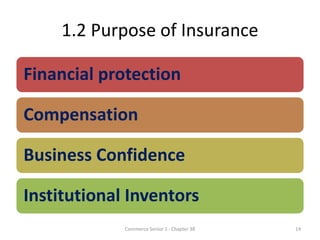Examine This Report on Pacific Prime
Examine This Report on Pacific Prime
Blog Article
The Facts About Pacific Prime Revealed
Table of ContentsNot known Facts About Pacific PrimeThe 8-Second Trick For Pacific Prime4 Easy Facts About Pacific Prime DescribedSome Of Pacific PrimeFacts About Pacific Prime Uncovered

This is due to the fact that the data were accumulated for a duration of solid financial efficiency. Of the approximated 42 million individuals that were without insurance, almost regarding 420,000 (regarding 1 percent) were under 65 years old, the age at which most Americans end up being qualified for Medicare; 32 million were adults in between ages 18 and 65, around 19 percent of all adults in this age; and 10 million were kids under 18 years of age, concerning 13.9 percent of all children (Mills, 2000).
These price quotes of the number of persons without insurance are created from the yearly March Supplement to the Existing Populace Survey (CPS), carried out by the Demographics Bureau. Unless or else noted, national price quotes of people without health and wellness insurance coverage and proportions of the population with various type of insurance coverage are based on the CPS, the most widely made use of source of estimates of insurance coverage and uninsurance prices.
The Best Guide To Pacific Prime

Still, the CPS is specifically helpful because it produces annual price quotes relatively quickly, reporting the previous year's insurance coverage estimates each September, and due to the fact that it is the basis for a consistent set of quotes for greater than two decades, enabling analysis of fads in insurance coverage gradually. For these reasons, in addition to the comprehensive use of the CPS in other research studies of insurance policy protection that are presented in this report, we rely upon CPS estimates, with restrictions kept in mind.

The quote of the variety of uninsured people broadens when a population's insurance coverage condition is tracked for several years. Over a three-year duration starting early in 1993, 72 million individuals, 29 percent of the U.S. https://moz.com/community/q/user/pacificpr1me. population, lacked coverage for at the very least one month. Within a single year (1994 ), 53 million individuals experienced at the very least a month without insurance coverage (Bennefield, 1998a)
Six out of every 10 without insurance grownups are themselves utilized. Working does enhance the probability that one and one's family participants will certainly have insurance coverage, it is not a guarantee. Also members of households with 2 full-time wage earners have virtually a one-in-ten possibility of being without insurance (9.1 percent without insurance rate) (Hoffman and Pohl, 2000).
Top Guidelines Of Pacific Prime
New immigrants make up a significant percentage of individuals without health insurance. One evaluation has connected a considerable portion of the recent growth in the size of the U.S. without insurance populace to immigrants who got here in the nation in between 1994 and 1998 (Camarota and Edwards, 2000). Recent immigrants (those who came to the USA within the previous 4 years) do have a high rate of being uninsured (46 percent), however they and their kids account for just 6 percent of those without insurance policy across the country (Holahan et al., 2001).
The connection in between medical insurance and accessibility to care is well established, as documented later in this chapter. Although the partnership between medical insurance and health and wellness results is neither straight neither basic, a comprehensive clinical and health and wellness solutions research literature links medical insurance coverage to enhanced access to care, far better high quality, and enhanced personal and populace health and wellness standing.
Degrees of evaluation for analyzing the effects weblink of uninsurance. This discussion of medical insurance coverage focuses primarily on the U.S. population under age 65 because virtually all Americans 65 and older have Medicare or various other public insurance coverage. Furthermore, it focuses especially on those without any type of health and wellness insurance for any kind of length of time.
Getting My Pacific Prime To Work
The troubles faced by the underinsured are in some areas similar to those encountered by the without insurance, although they are normally less serious. Health and wellness insurance policy, however, is neither needed neither adequate to gain accessibility to medical solutions. The independent and direct impact of health insurance policy protection on access to health and wellness services is well established.
Others will get the healthcare they require also without medical insurance, by paying for it expense or seeking it from suppliers that provide treatment complimentary or at extremely subsidized prices. For still others, health and wellness insurance policy alone does not make sure receipt of treatment because of various other nonfinancial obstacles, such as a lack of health and wellness treatment service providers in their neighborhood, limited accessibility to transportation, illiteracy, or etymological and cultural distinctions.
The Best Guide To Pacific Prime
Formal research study about uninsured populations in the United States dates to the late 1920s and very early 1930s when the Board on the Expense of Healthcare created a series of records concerning financing doctor workplace sees and hospital stays. This concern came to be significant as the numbers of clinically indigent climbed up throughout the Great Clinical depression.
Report this page